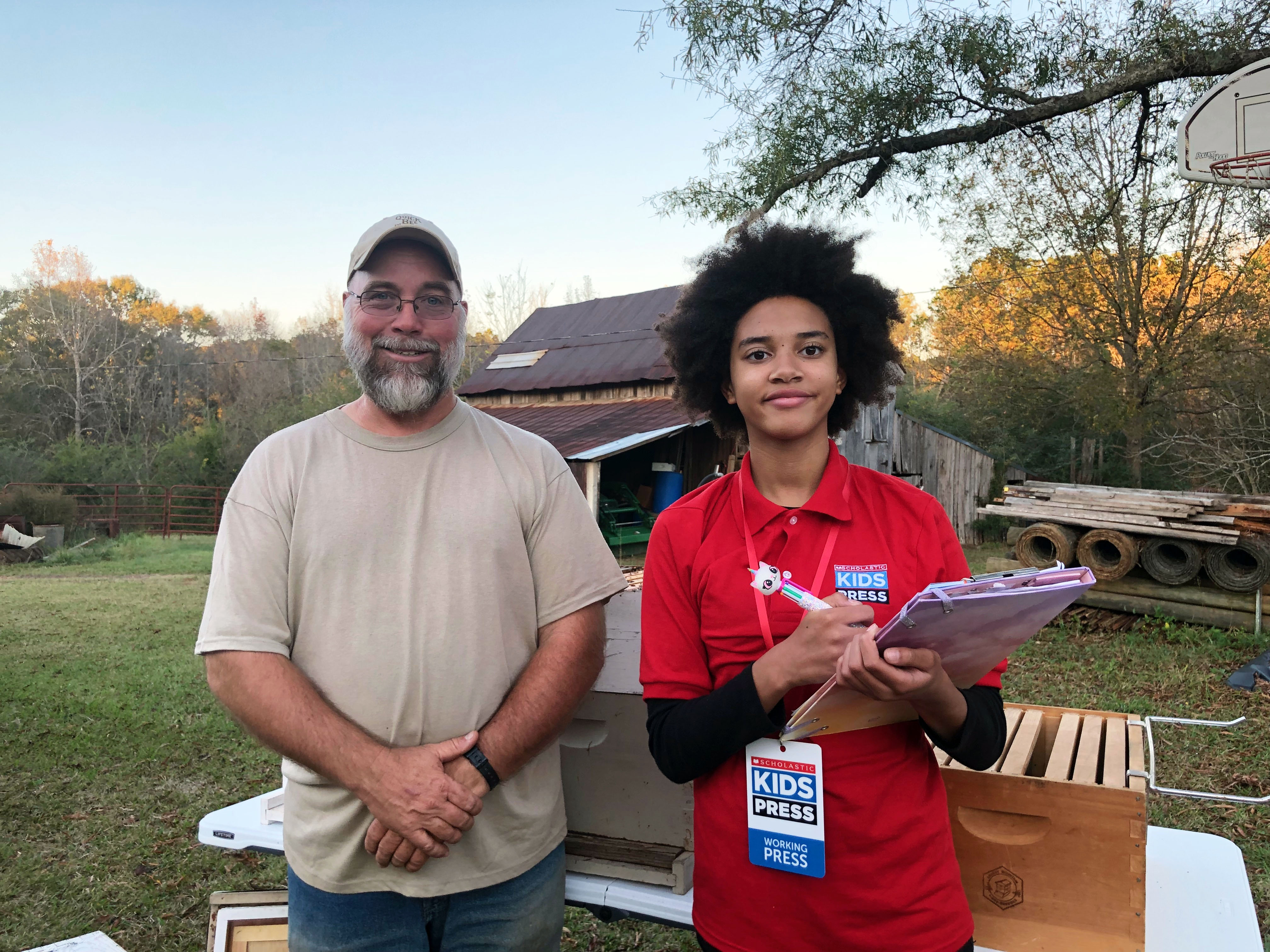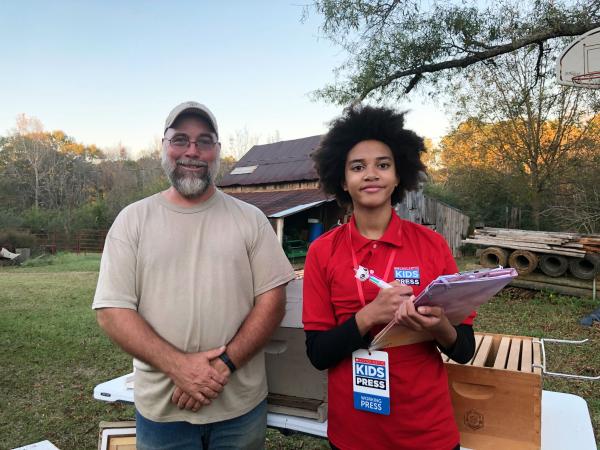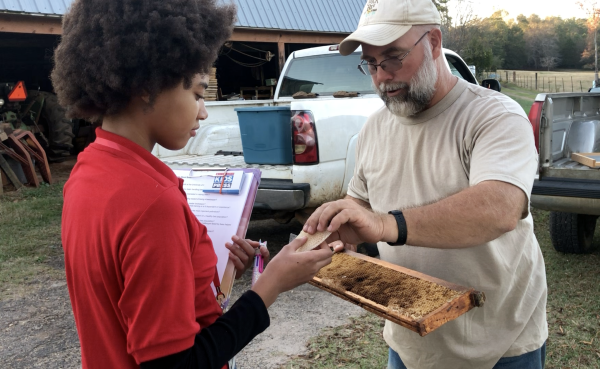KID REPORTERS’ NOTEBOOK
Why Are Bees in Danger?


Skye with master beekeeper Jim Quick
Growing up on a farm in Orchard Hill, Georgia, Jim Quick learned how vital bees are to the food we eat. When he was 11, his grandfather asked him to start a beehive to keep the crops flourishing.
“Forty-two years later, and I’m still learning,” Quick said in a recent interview. Before his retirement, the master beekeeper taught entomology (the study of insects) at the University of Georgia in Athens.
Quick is still learning about bees on the farm where he grew up. But he is concerned: The bee population is in danger. Nearly 40% of beehives in the United States were lost in 2021 alone. The collapse concerns Quick and other scientists because bees are essential to food production.
Bees are responsible for much of the food we eat. They pollinate flowering plants and crops, resulting in the production of seeds and fruits.
The declining bee population can be attributed to several factors, including parasites that kill or weaken the hives. “Back when I started, it wasn’t hard at all,” Quick said. “A lot of the problems—pests and diseases—came about over the past 30 years.”
Habitat loss, pesticides, and climate change are also to blame. Pesticides, Quick explained, get into the nectar of plants, which is essential to a bee’s diet. Toxins in the nectar harm the bees’ memory.

Quick shows Skye a honeycomb created by bees to store their honey and pollen.
WHAT CAN BE DONE?
Scientists are searching for solutions to help the bee population. But Quick already has an idea. “Set up a hive at school,” he said, “and learn more about pollinators.”
Kids aren’t too young to help. After all, Quick started his first beehive the age of 11. “We could grow more bees,” he said, “if we had more people to do it.”
